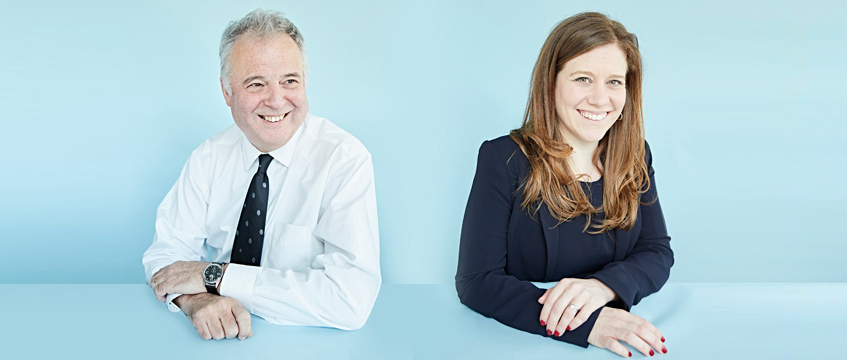Housing association Places for People has launched a new £150m PRS fund seeded with 1,379 homes from its existing UK portfolio.
It is the first deal of its kind in the UK, and is being offered to institutional investors as giving instant access to the UK housing market.
Managing subsidiary PfP Capital plans to grow the fund to £300m, but it is income producing from day one.
The fund will be the first of many for one of the UK’s largest housing associations, and will potentially allow it to re-invest millions into further housebuilding.
So how did a housing association end up in this position, and what is the plan for the future?
Investors’ dream
For investors, the exciting part about PfP’s new fund is that it is not launching a fund to be built out, but offering a fully functioning fund seeded with assets from its existing portfolio.
In other words: a ready-made, income-producing residential rental portfolio, with considerable potential for growth – also known as the stuff that investors dream of.
When asked about the return provided to investors, “5% net” is the answer from Tim Saunders, director of the new fund.
But what is he basing that figure on?
“We have three years of detailed financial track history that we will be putting forward, showing the performance over time,” he says.
It is a big change from two years ago, when many commentators were ringing the death knell for housing associations.
Then-chancellor George Osborne’s cut to rents − effectively prohibiting future borrowing − was followed by an election promising the Right to Buy housing association stock. The sector was in turmoil, and went into a collective period of navel gazing.
But those that have weathered the storm now have a new lease of life.
L&Q is planning to build out 100,000 homes in 10 years. Peabody is building 20,000 alone at Thamesmead, SE28.
PfP’s model, while very different, should allow it to expand exponentially, but it is not all plain sailing. According to Saunders, there are two key challenges.
“The first is taking a portfolio to market that is not build to rent,” he says. “This is what I would call traditional PRS, houses and smaller apartment blocks. From that point of view we need to explain what the portfolio is, what it does and why its good.
“The other challenge for us is we are a first-time fund manager.”
Make money to spend money
Running PfP Capital’s funds will be managing director Chris Jones. He was the man tasked with getting it accredited fund manager status in the first place − which some might say is a bizarre thing for a housing association to do.
“We have always been an innovator in raising capital at PfP,” says Jones.
“I was involved in establishing the first unsecured medium term note program, which was effectively a platform capability to issue into the bond markets. Previously the sector raised debt through banking relationships and own-name bond issues.”
Now he is looking for ways for the housing association to make money from private sector activities, which can then be ploughed back into it.
The PRS fund is just the first of many − after this will come student, retirement, affordable, and then build to rent. Jones says that within five years it will have up to a £1bn under management.
“By creating a fund management business, and raising capital in that context, it allows us as a group to go out and raise additional capital, so that we can help contribute to developing housing at scale,” he says.
Jones points out the company is far from short of cash, raising £450m before the end of 2016, but “the fund management business will allow us to access different pools of capital”.

Financial nuclear fission
Essentially, the government changes to housing associations drove PfP to use private sector options to finance its social remit – building more affordable housing.
According to chief executive David Cowans, the company has been doing PRS and housing for sale since 1999. He points out that there is nothing unusual about a housing association doing mixed-tenure development, because they have been doing it for 20 years.
During that time, PfP has created a housebuilding arm, a rental operator, a modular construction business, a student manager, a retirement housebuilder and even a series of leisure centres [see box out].
“We wanted to create what I call the financial equivalent of nuclear fission,” he says. “Fundamentally, the capital we raise, we will reinvest to produce more assets.”
It is for that reason that Cowans dislikes the term housing association – and he wastes no time in trying to distance himself from the phrase. He also points out that the company is not a charity.
“We have never been a charity – we reinvest our capital, we are a registered provider but we are not a charity. We are simply ‘not for dividend’ is a good way of thinking about it,” he says.
“This is an asset-backed fund where people will be looking for places to put their institutional finance to get their return, and we have come up with a model which is asset backed and well managed, and has a good and deep pipeline of new production.”
A sign of things to come?
So will the industry now be inundated with housing associations converting their stock into PRS and offering it to the institutional market, or are there hidden hurdles?
“Technically, there aren’t, no,” says Jones.
But perhaps the real obstacle is the existing mindset of housing associations.
Alex Notay, director of product and service innovation, points out that its expensive and risky to set up a fund management platform and many associations will be unhappy with that kind of commercial structure.
“Whacking on a fund wrapper is not particularly difficult,” she says. “But to a management board that maybe isn’t familiar with that…”
On the other hand, if housing associations do not modernise and expand, they will fade away.
“There is still a real culture around commercial activity of ‘we do not really like and we do not want to be profitable’. I think that’s really unfortunate,” says Notay.
“Making a profit does not make you a bad entity. I really like here that it is a commercial enterprise with a social soul.”
For PfP, it is a whole new world. For the institutional market, it’s a massive future opportunity.
And in terms of solving the housing crisis, it’s a another brick in the wall.
What is Places for People?
- One of the largest property and leisure management, development and regeneration companies in the UK
- A registered provider, it owns or manages over 150,000 homes
- Assets in excess of £3bn, including a PRS arm, retirement arm, modular construction arm and a series of leisure centres
- First incorporated in 1965
- Developing private sector homes since 1999
- Involved on schemes including 1,400 homes at Eastwick and Sweetwater in Stratford, E14; a 3,000 home partnership with Aberdeen Council; and the 3,000-home Icknield Port Loop project in Birmingham
- Current output stands at around 1,500 new homes each year
Places for People’s new PRS fund − how it works
- PfP Capital will acquire 1,379 residential units from PfP, valued at around £150m
- The homes are across 50 sites, with a 70:30 split between apartments and housing.
- Some are part of wider developments, some are standalone homes.
- The fund will be a flexible, semi-open fund structured to suit institutional investors
- It will deliver passing income from day one, with a gross rental yield of 7% and a net yield of 5%. It has a net annual rent roll of £7.7m.
- It intends to grow the fund to £300m though the acquisition of new stock and the transfer of others on its books
- It will maintain a 10% stake in the fund, and all secondary capital raised will be passed back into the main group.
- It plans to open other future funds targeting the student, retirement housing, affordable housing and build-to-rent sectors.
- Rothschild have been appointed to advise on the establishment of the fund.
To send feedback, e-mail alex.peace@estatesgazette.com or tweet @egalexpeace or @estatesgazette











